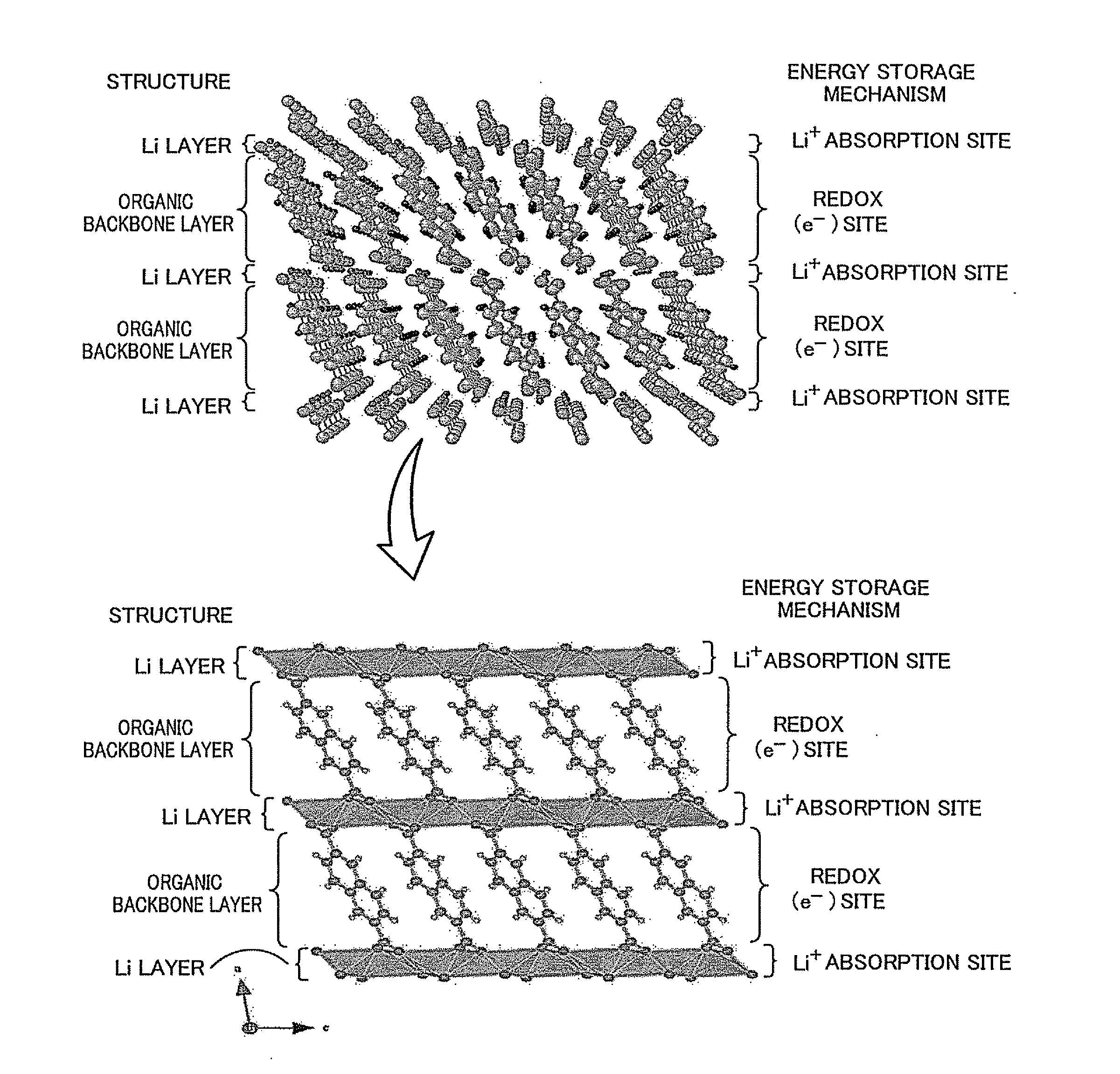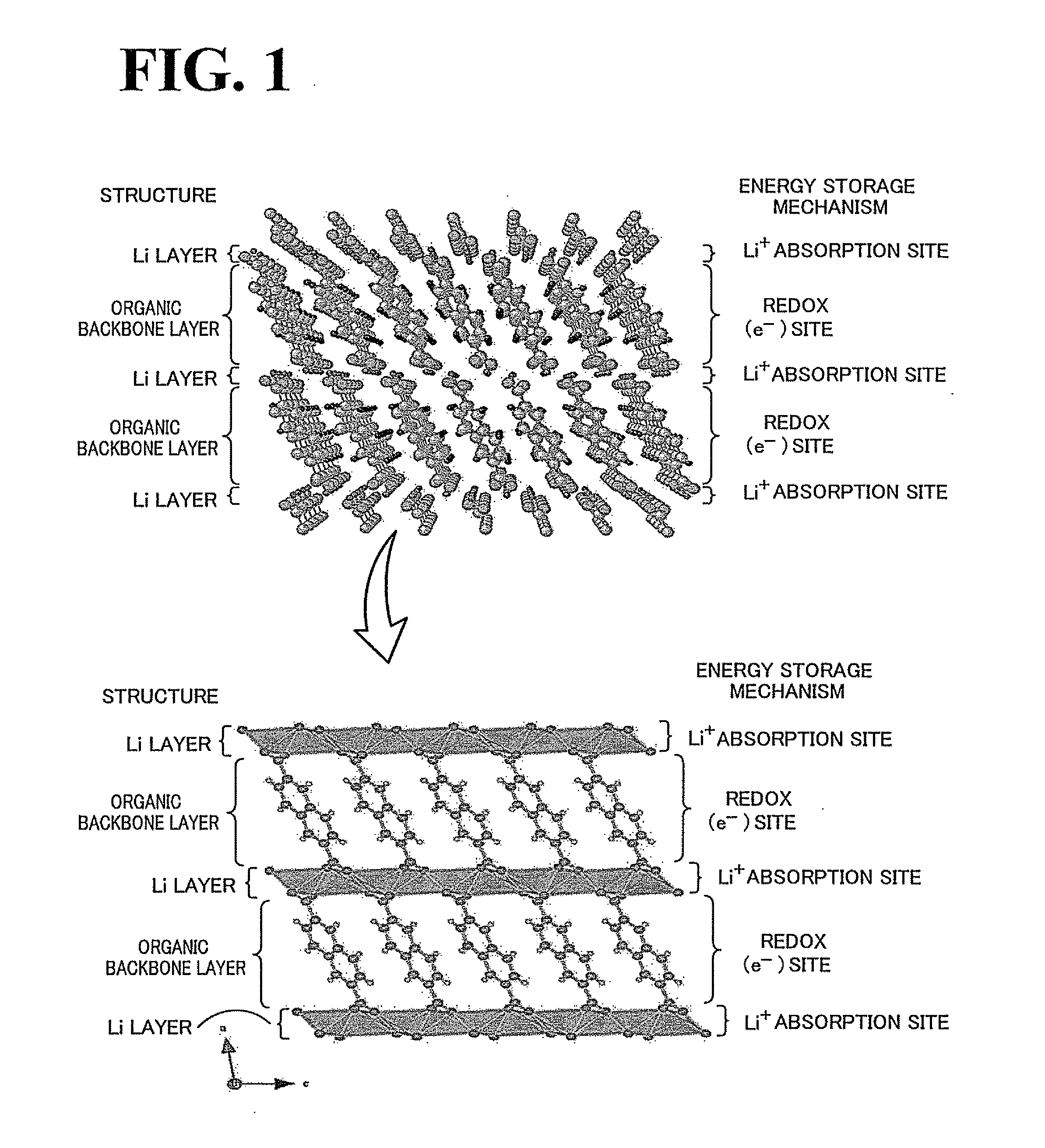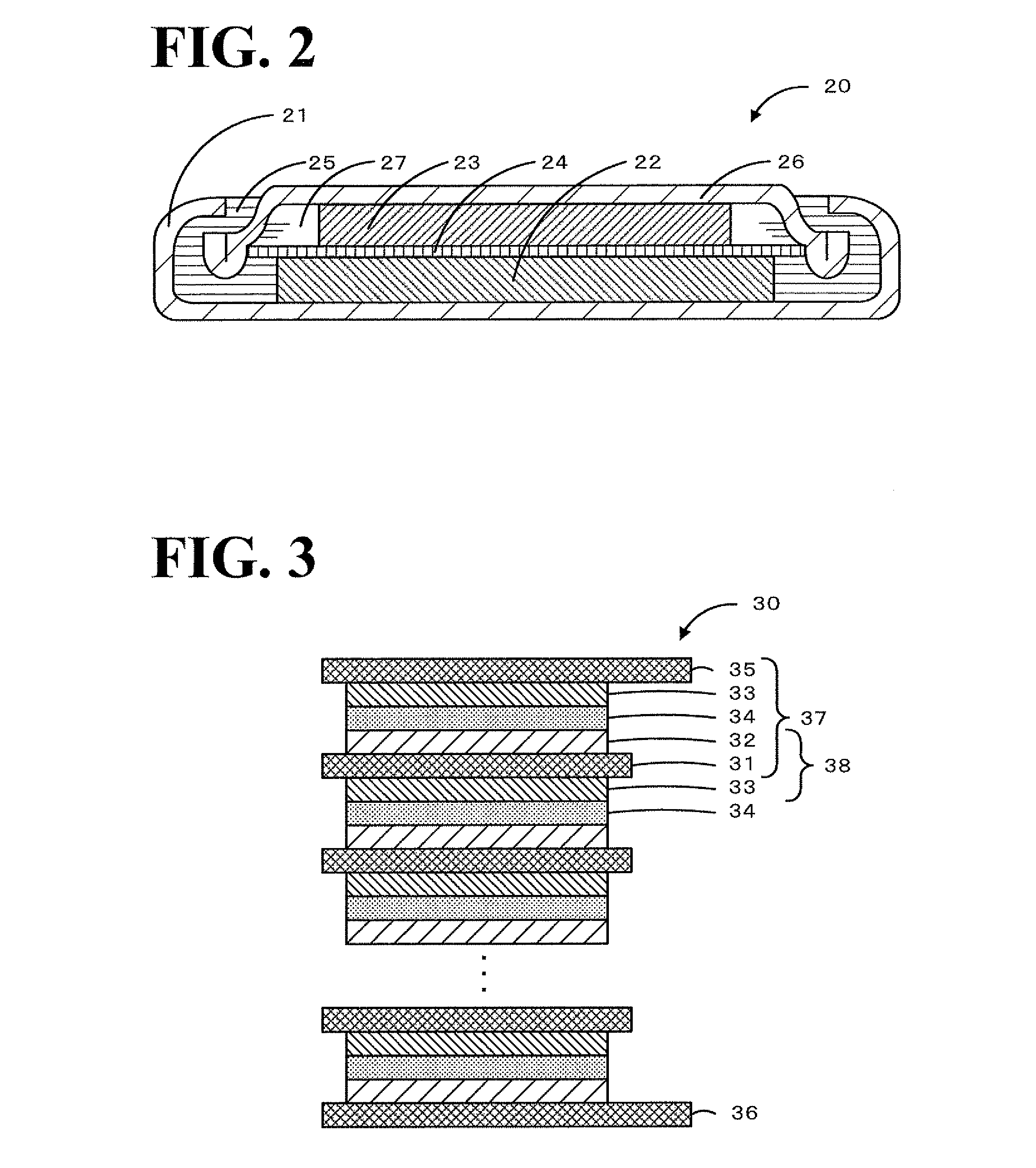Nonaqueous secondary battery electrode, nonaqueous secondary battery including the same, and assembled battery
- Summary
- Abstract
- Description
- Claims
- Application Information
AI Technical Summary
Benefits of technology
Problems solved by technology
Method used
Image
Examples
example 1
[0066]Lithium 2,6-naphthaleledicarboxylate (see formula (7)) was synthesized as a layered composition. The starting materials used for synthesis of lithium 2,6-naphthaleledicarboxylate were 2,6-naphthaleledicarboxylic acid and lithium hydroxide monohydrate (LiOH.H2O). First, 100 mL of methanol was added to 0.556 g of lithium hydroxide monohydrate, and it was stirred. After the lithium hydroxide monohydrate was dissolved, 1.0 g of 2,6-naphthaleledicarboxylic acid was added, and it was stirred for one hour. After stirring, the solvent was removed, and the residue was dried in vacuo at 150° C. for 16 hours to yield a white powder sample. The resulting white powder sample is referred to as an active material powder of Example 1.
[0067]Fabrication of Coated Electrode
[0068]A nonaqueous secondary battery electrode was fabricated using the active material powder of Example 1. A slurried mixture was prepared by mixing 60% by mass of the lithium 2,6-naphthaleledicarboxylate of Example 1, 30% b...
example 2
[0071]A white powder sample was yielded as an active material powder of Example 2 by repeating the procedure of Example 1 except that the lithium 2,6-naphthaleledicarboxylate of Example 1 was replaced by lithium 4,4′-biphenyldicarboxylate (see formula (8)). Also, a nonaqueous secondary battery electrode of Example 2 was fabricated by repeating the procedure of Example 1 using the active material powder of Example 2, and a bipolar test cell was fabricated using the nonaqueous secondary battery electrode of Example 2.
example 3
[0079]A nonaqueous secondary battery electrode was fabricated using the active material powder of Example 1. A slurried mixture was prepared by mixing 60% by mass of the lithium 2,6-naphthaleledicarboxylate of Example 1, 10% by mass of vapor-grown carbon fiber (VGCF) as a conductor, 20% by mass of carbon black (conductive particles) as a conductor, and 10% by mass of polyvinylidene fluoride as a binder and dispersing the mixture using an appropriate amount of N-methyl-2-pyrrolidone as a dispersant. The BET specific surface area of the VGCF determined by nitrogen absorption was 13 m2 / g, and the average fiber length determined by measuring the length of fibers contained in an SEM image was 15 Rm. In addition, the BET specific surface area of the carbon black determined by nitrogen absorption was 225 m2 / g, and the average particle size determined by measuring the size of particles contained in an SEM image was 25 nm. The slurried mixture was uniformly applied to a 10 ml thick aluminum ...
PUM
| Property | Measurement | Unit |
|---|---|---|
| Fraction | aaaaa | aaaaa |
| Fraction | aaaaa | aaaaa |
| Percent by volume | aaaaa | aaaaa |
Abstract
Description
Claims
Application Information
 Login to View More
Login to View More - R&D Engineer
- R&D Manager
- IP Professional
- Industry Leading Data Capabilities
- Powerful AI technology
- Patent DNA Extraction
Browse by: Latest US Patents, China's latest patents, Technical Efficacy Thesaurus, Application Domain, Technology Topic, Popular Technical Reports.
© 2024 PatSnap. All rights reserved.Legal|Privacy policy|Modern Slavery Act Transparency Statement|Sitemap|About US| Contact US: help@patsnap.com










